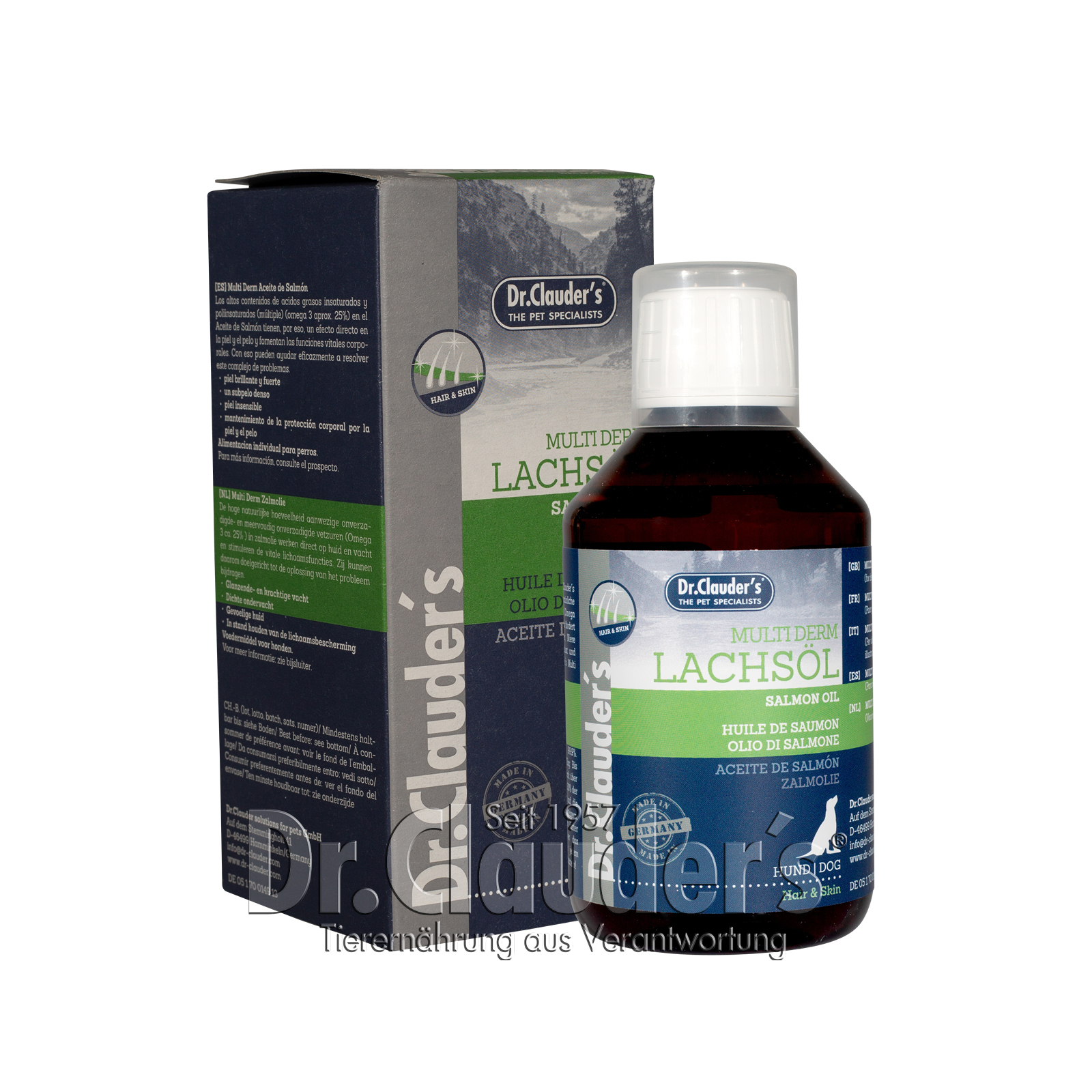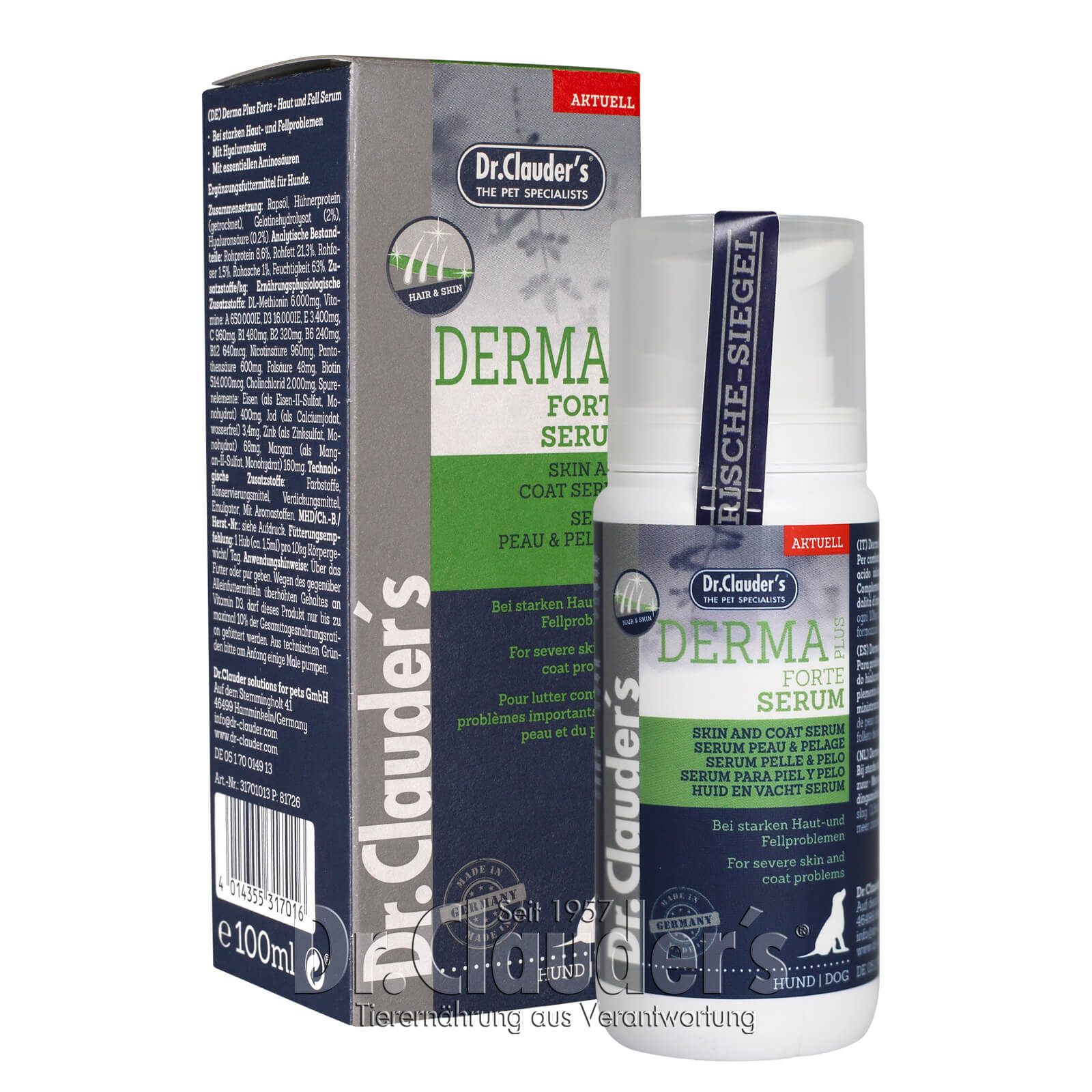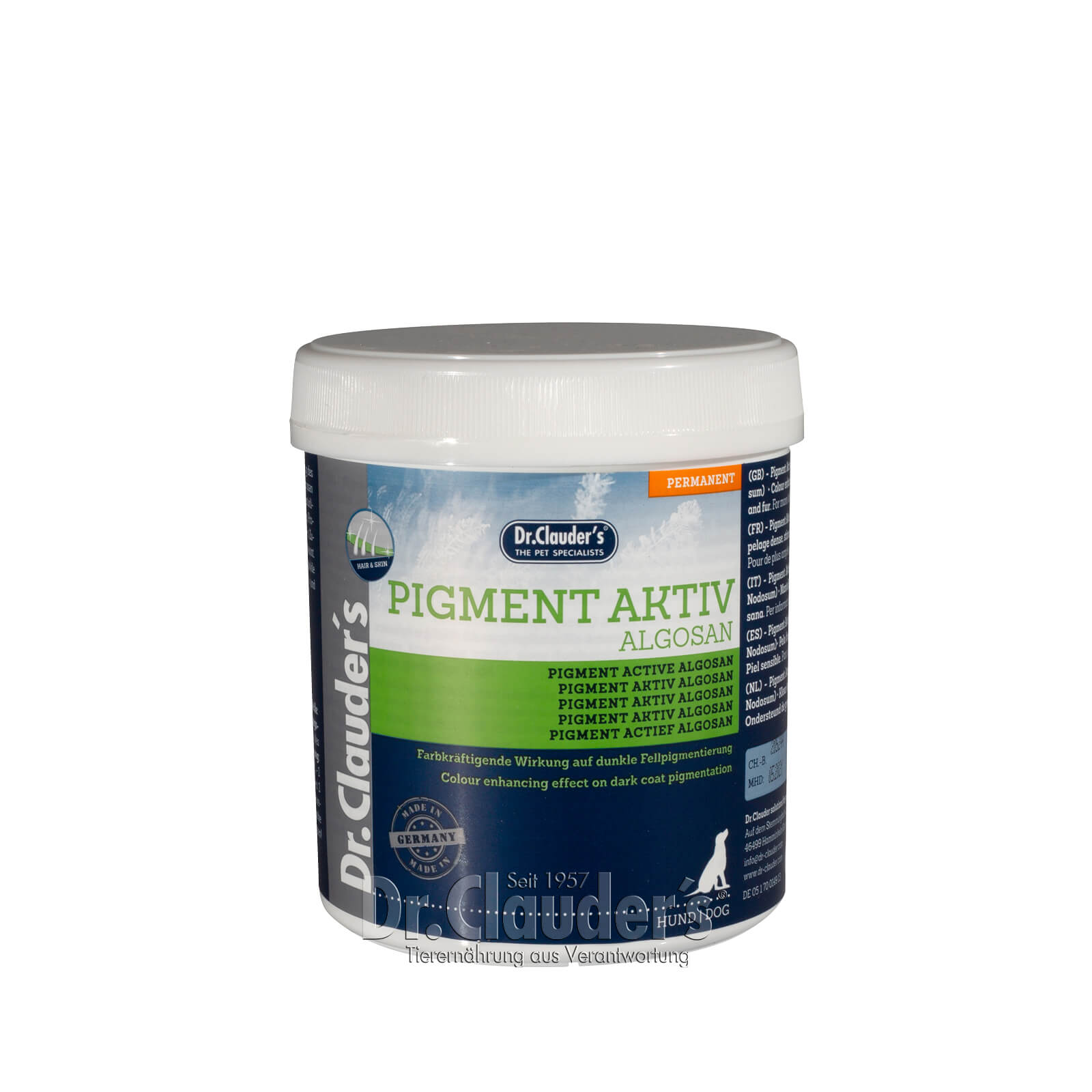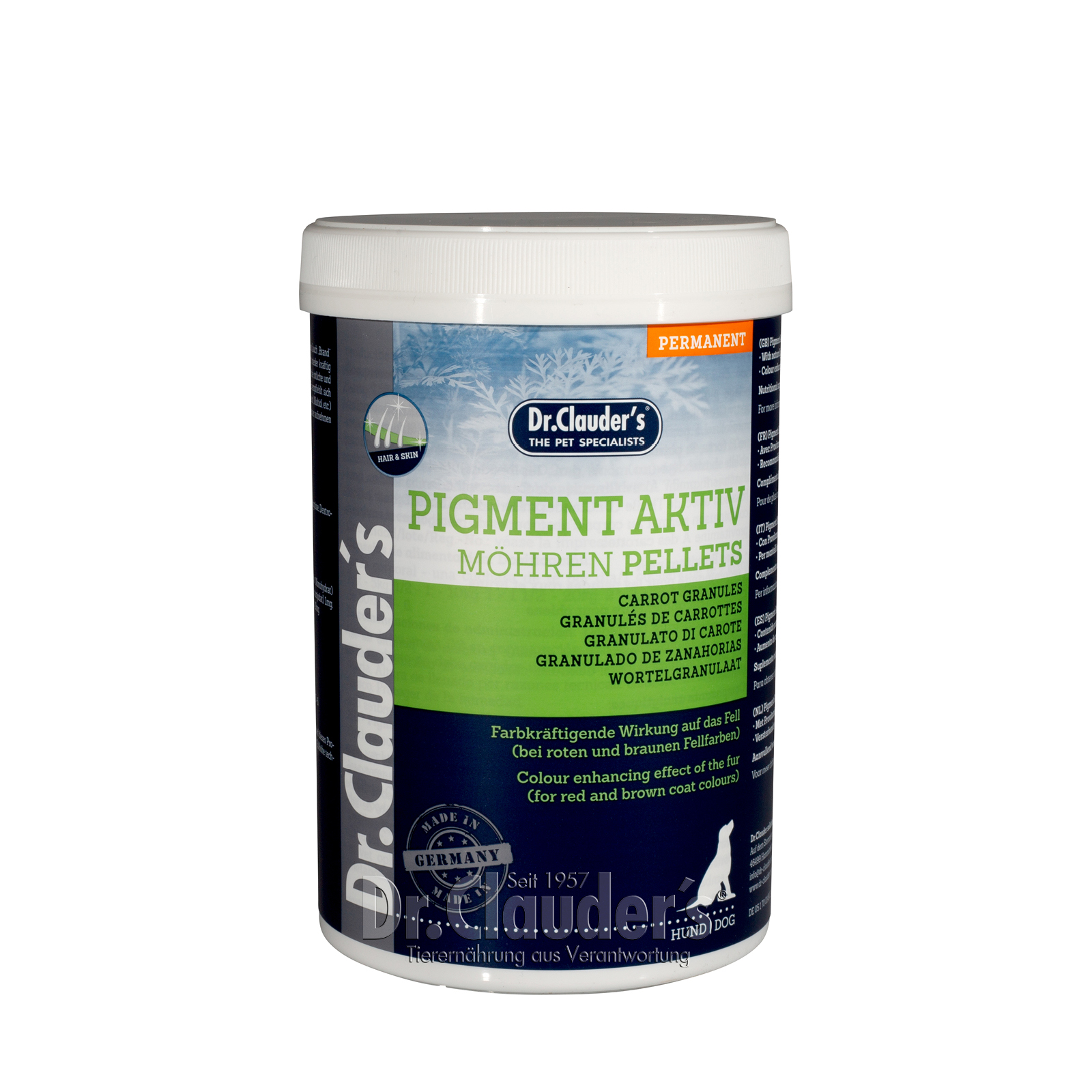Included in this article:
- Dog skin
- Skin diseases
- Recognise symptoms
- Coat change
- Tips for skin and coat
- Nutrients for skin metabolism
- Points to note
- Product tips
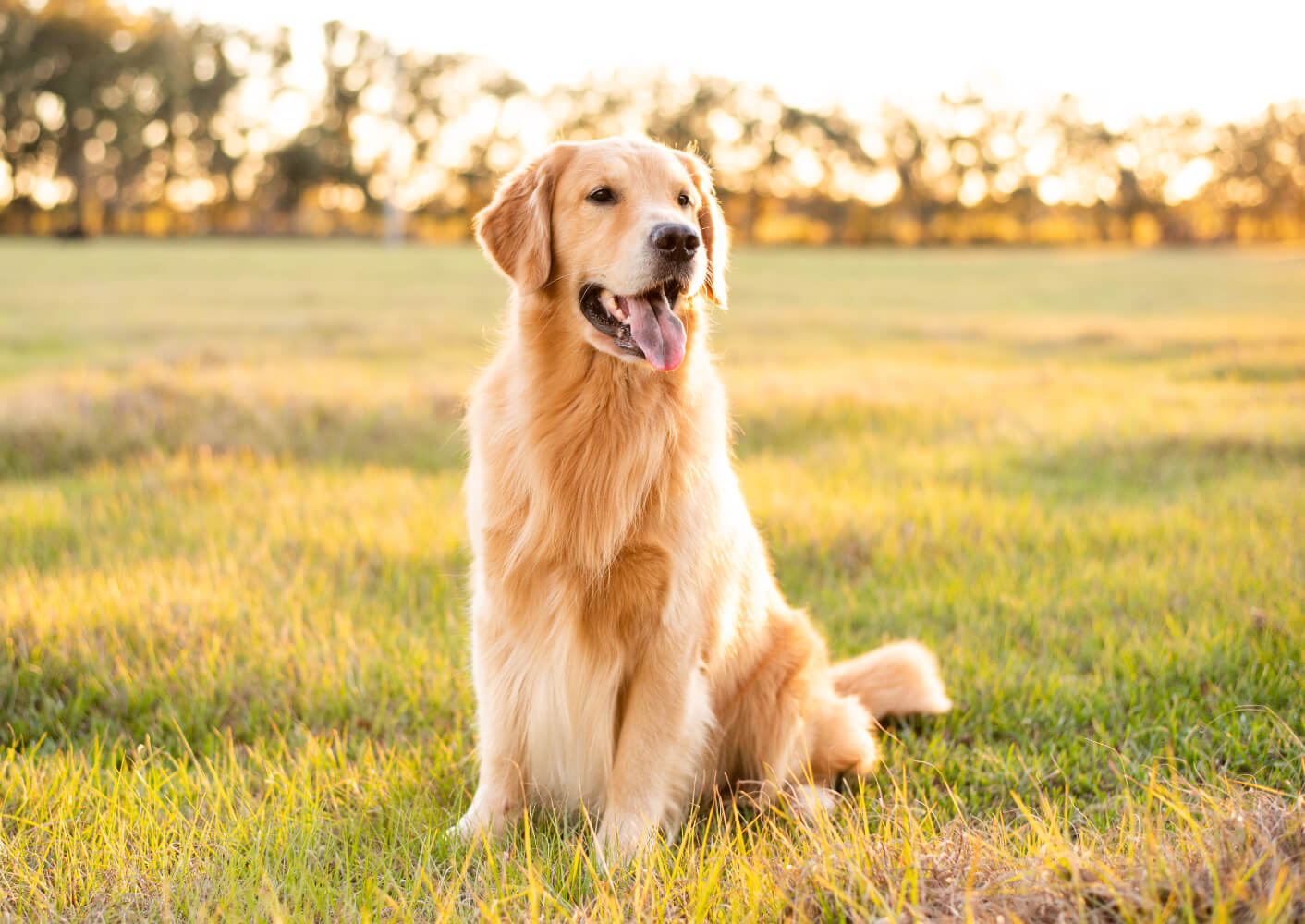
Skin and coat care for dogs
The coat is not only one of the most striking visual features of a dog, it also gives valuable information about its state of health. A shiny and strong coat shows that the dog is not suffering from any deficiencies or diseases. A lack of minerals, vitamins and essential fatty acids, on the other hand, can have an effect on your dog's coat - it can appear dull and brittle. Excessive hair and permanent shedding indicate that something is out of balance. Brittle claws and prone skin are further indications of deficiencies or diseases.
What factors influence the condition of your four-legged friend's skin and coat and what can you do as an owner? This article provides valuable information and tips.
The structure of the dog's skin
- The epidermis: Several layers of horny cells protect against invading germs or other harmful external influences.
- The dermis: Made up of connective tissue, sebaceous glands and blood vessels, this layer supplies the epidermis with oxygen and nutrients. The sebaceous glands produce an oily film on the surface of the skin - this keeps it supple and protects it.
- The hypodermis: Composed of fatty tissue and blood vessels, this layer serves as an energy store and protects against cold. The tissue is also a good water reservoir and prevents water loss in the body.
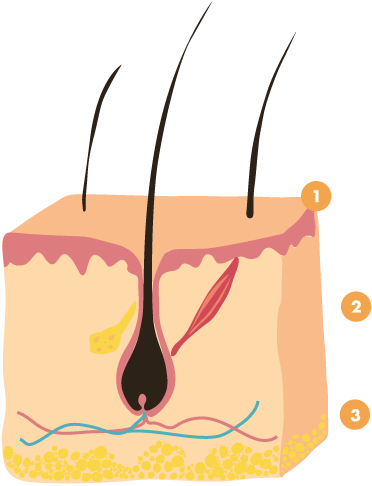
What skin diseases are there in dogs?
Skin irritations in dogs are usually accompanied by severe itching, which can be a torment for your furry friend. If you intervene early, you can help relieve the symptoms and prevent the spread of skin problems.
These are the most common skin conditions in dogs:
- Allergies (triggered by environmental factors, flea bites or food intolerances).
- Hormonal problems
- Histaminosis
- Autoimmune diseases
- Fungal diseases
- Bacterial infections
- Tumours
- Infestation with parasites such as grass mites, fleas, ticks or lice.
Your dog's gastrointestinal tract can also be affected by skin problems. Causes include malnutrition, medication or environmental toxins.
How to recognise skin problems in dogs
Unusual skin changes are not always immediately obvious, because your dog's skin is well hidden under its coat.
This makes it all the more important to follow up on changes in your dog's appearance and behaviour. If you notice any of the following symptoms during regular grooming, it's time to visit the vet:
- Brittle and/or dull coat
- Skin inflammation (skin is red, swollen and warm to the touch)
- Dry skin and dandruff
- Skin thickening
- Eczema
- Itchy ears
- Frequent scratching and gnawing on certain parts of the body
- Loss of hair or thinning coat
- Bloody and oozing wounds
Dogs try to counteract the accompanying itching by scratching, rubbing or rolling around.
The problem: The skin is further irritated and the risk of infection increases.
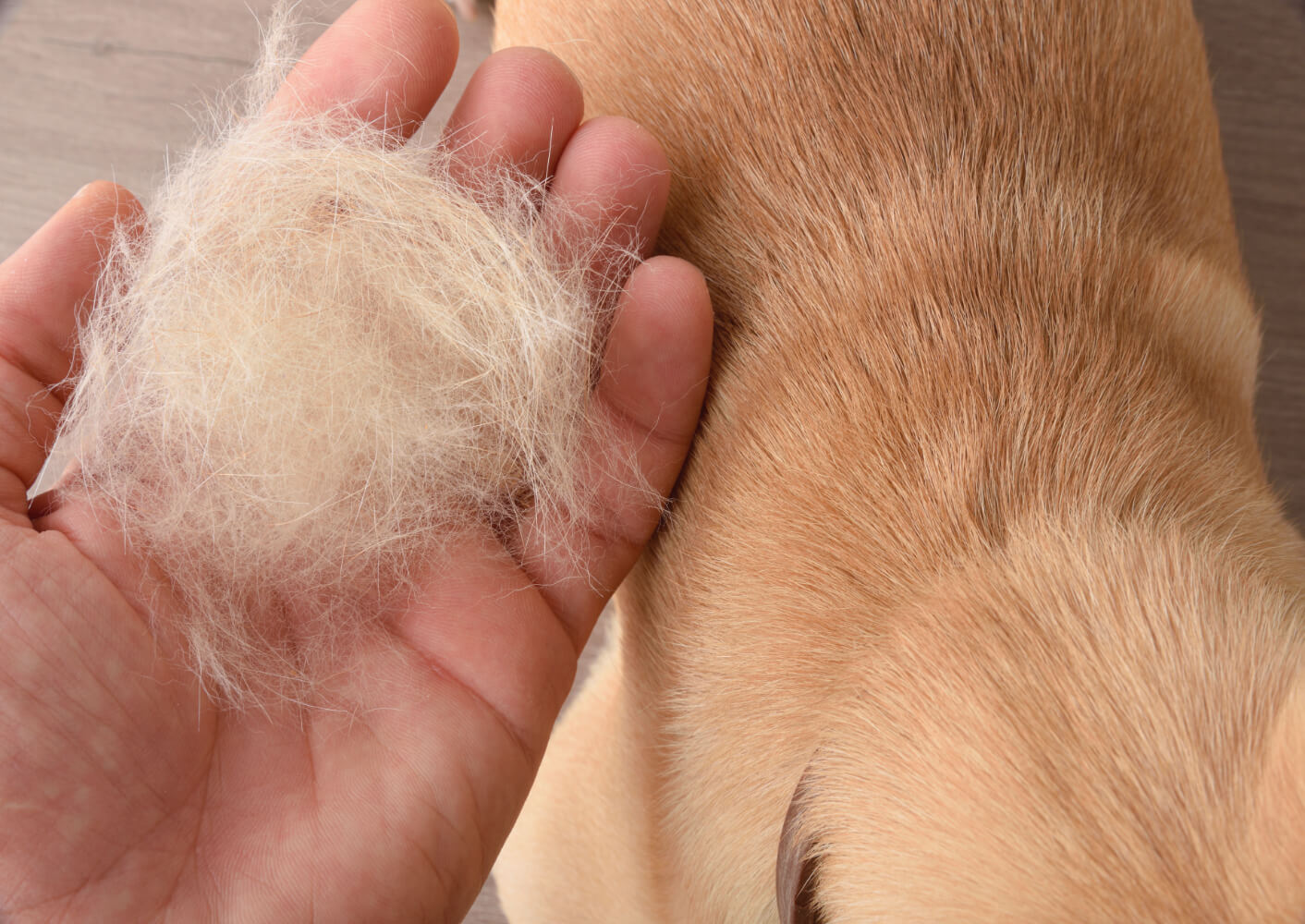
Coat change in dogs
The weather changes and so does the coat of our four-legged friends. Twice a year, dogs change from a light summer coat to a cosy winter coat and back. While it is obvious that the hair falls out during the wardrobe change to the summer coat, an all-round renewal also takes place with the winter coat. The old hair falls out, new dense fur grows back.
This is hard work for our furry noses and can sometimes bring unpleasant side effects. The change can lead to itching, dandruff and skin irritations. But it's not just seasonal changes that can cause a change in coat - castration, heat, moving house or a new flatmate can also trigger stress and cause your four-legged friend to shed its coat.
TIP: To give your pet the best possible support during the coat change, regular combing is recommended to remove dead and loose hairs, to prevent the hair from matting and to allow the skin to breathe. In addition, the combing process ensures that the skin is better supplied with blood. Dogs that learn this type of grooming from an early age enjoy the caresses of brushing. Depending on the breed, you should comb the hair two to seven times a week during the change.
How much hair loss is normal?
It is not unusual for a four-legged friend to scratch or lick itself a little more than normal during the change of coat. After all, the dead and loose hairs on the skin are prickly.
However, if bald patches, eczema, excessive scratching or reddened skin appear, a visit to the vet is advisable. You should also keep an eye on the coat itself: A shiny coat indicates a healthy change of coat. If, on the other hand, it feels dull, greasy or oily, you should seek veterinary advice. Allergies or parasites can be the trigger for a pathological loss of coat.
Tips for skin and coat problems
- Brushing your dog more often is a good way to distribute the oil in the coat, and it also helps to loosen dead skin flakes and stimulate skin regeneration.
- When bathing your dog, be sure to use a moisturising dog shampoo and conditioner, otherwise the skin will continue to dry out.
- Healthy pet food is an important aspect; if in doubt, consult your vet to rule out any allergies or diseases.
- Avoid stressful situations for your dog. Many dogs react to such situations with "stress hair".
- Older dogs are not able to metabolise nutrients from food as well, so it is important that they get high quality and concentrated nutrients and oils that the body can absorb better.
If symptoms persist, consult your vet as soon as possible.
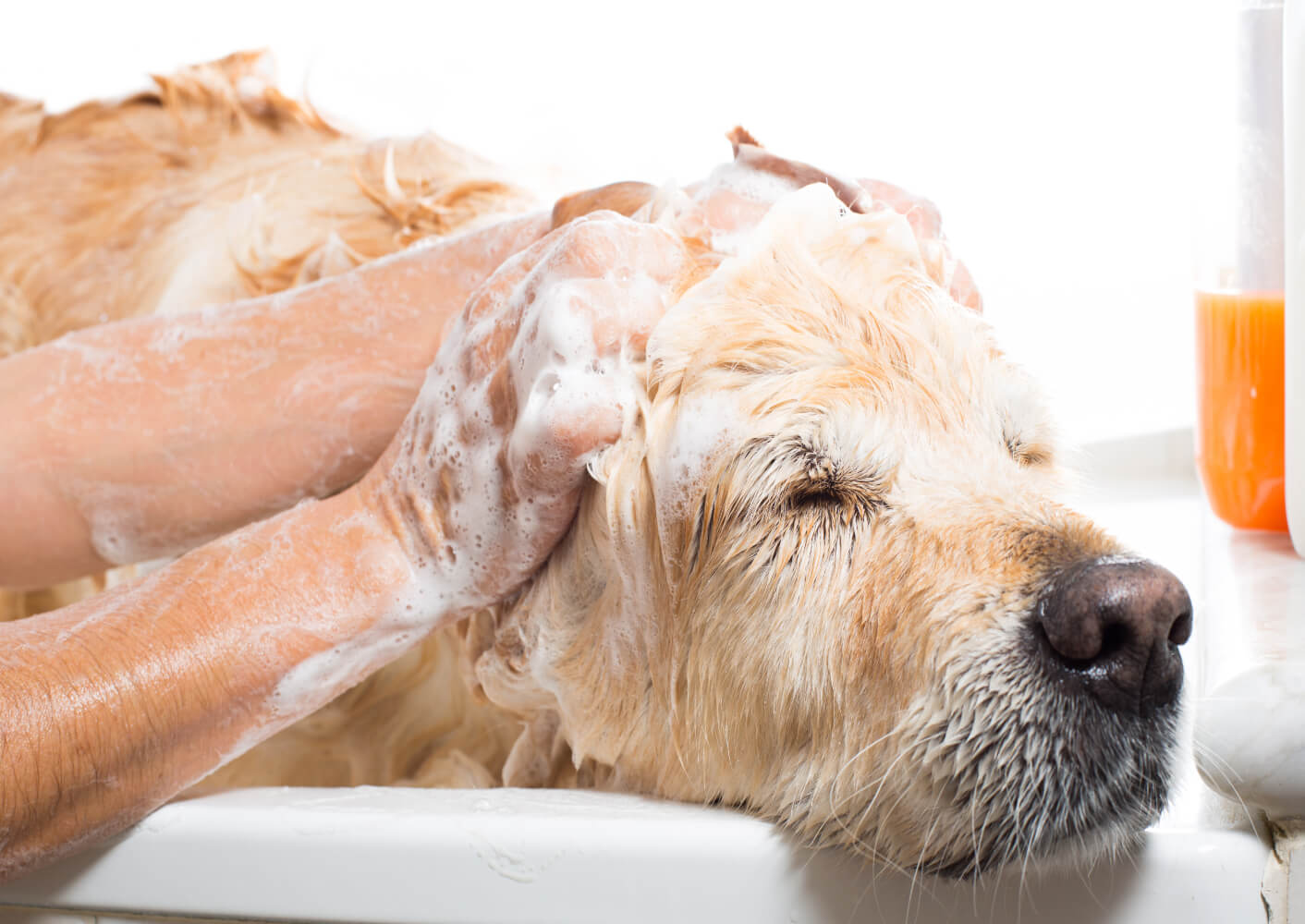
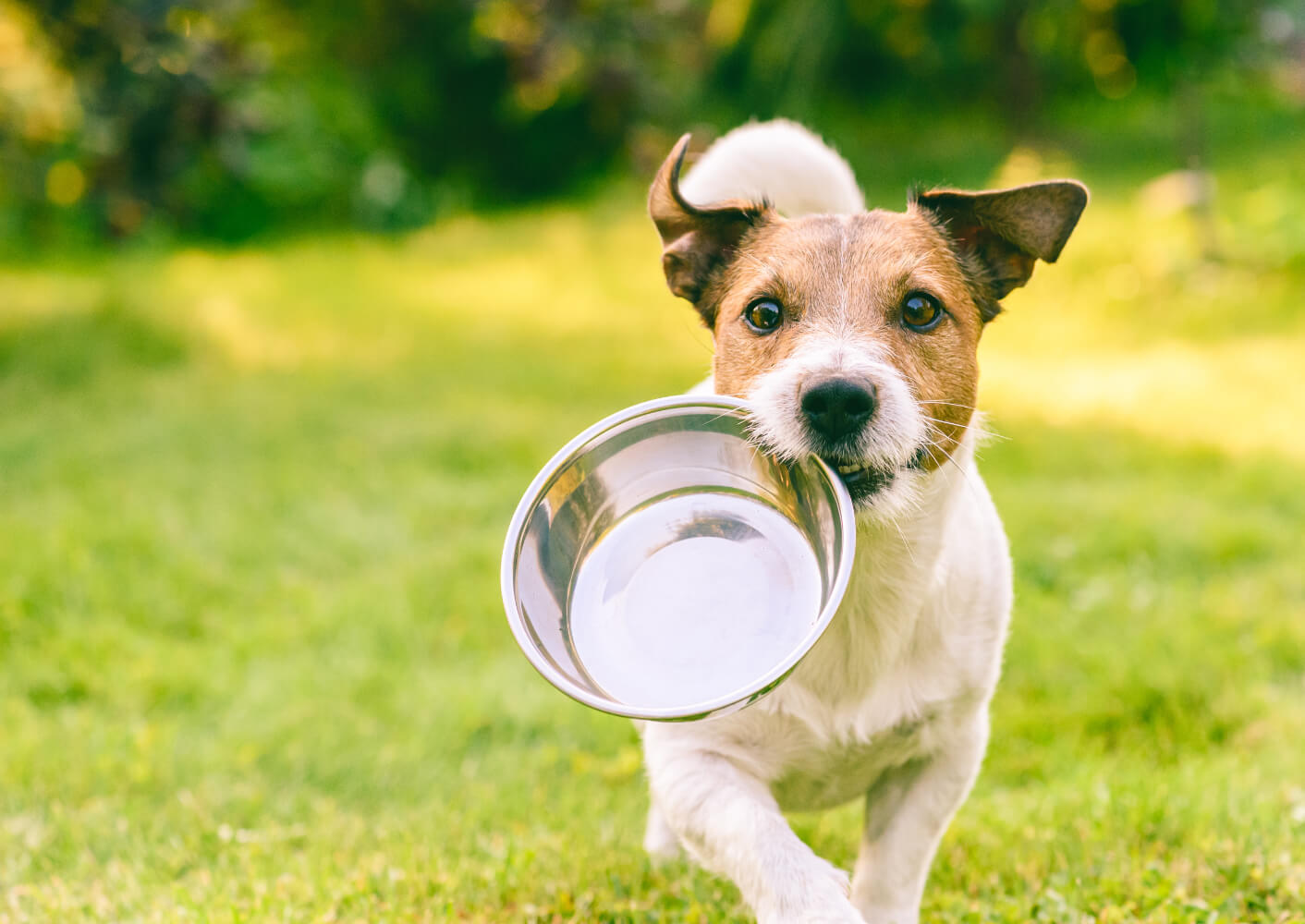
Nutrients for skin metabolism
The diet can help the four-legged friend with the coat change, for example. Certain nutrients promote skin metabolism: biotin in particular. It strengthens the hair and alleviates skin complaints, while at the same time strengthening the claws. An additional supply of vitamins and the essential amino acids DL-methionine and lysine is also recommended here. Fur Plus Serum offers the optimal combination to intensively strengthen the dog's coat and promote shedding.
A cure with natural ingredients supports dogs in a rapid change of coat. Especially during the transformation of the coat into a warming winter coat, dogs also enjoy the addition of various oils. Safflower oil, maize germ oil, sunflower oil, walnut oil, grape seed oil and linseed oil stimulate a thick undercoat and healthy skin. The Multi Derm Complex10 oil can simply be added to the feed.
Tasty helpers
As a reward after combing or in between, food supplements are suitable during the coat change, which spoil your furry nose and provide valuable omega fatty acids. These promote the skin's resistance and ensure a shiny coat. The omega-3 fatty acids contained in salmon oil also stimulate the vital functions of the liver, kidneys and metabolism.
In particular, a very picky food intake can result in deficiency symptoms. High-quality salmon oil, such as Multi Derm Salmon Oil, can help here. The fine aroma also tempts quadrupeds with a reluctance to eat or a lack of appetite to eat.
The fact that nutrition plays a major role in coat care also becomes clear in the case of allergies and intolerances . It is recommended to support affected dogs with biotin, high doses of vitamin A and hyaluronic acid to cope with the consequences of an allergic reaction. Hyaluronic acid in particular provides the skin with moisture as an excellent water reservoir and helps with regeneration. A corresponding dosage can be found in the product Derma Plus Fort.
Brings colour to the coat
If your dog's coat loses colour with age, supplements from nature can help. A dark pigmentation is refreshed by natural seaweed (Ascophyllum Nososum) enriched with minerals, proteins, vitamins and trace elements, such as in Dr.Clauder's Pigment Aktiv Algosan.
A reddish and brown pigmentation of the coat is promoted by the provitamin A (beta-carotene) contained in carrots, which the Pigment Aktiv carrot pellets contain.
To prevent deficiency symptoms reflected in the dog's coat and skin, you can permanently add Multi-Derm tablets to the food. The Fell Aktiv yeast pellets also ensure that your faithful companion lacks nothing and also have an anti-inflammatory effect thanks to the added devil's claw .
You should remember this
Dr.Clauder's for skin and coat
Dr.Clauder's Hair & Skin products get to the root of the problem - by optimally supplying the entire body with vitamins, unsaturated fatty acids and minerals. Because only a healthy dog enjoys an intact immune system, with a shiny, healthy coat and resistant, insensitive skin.

